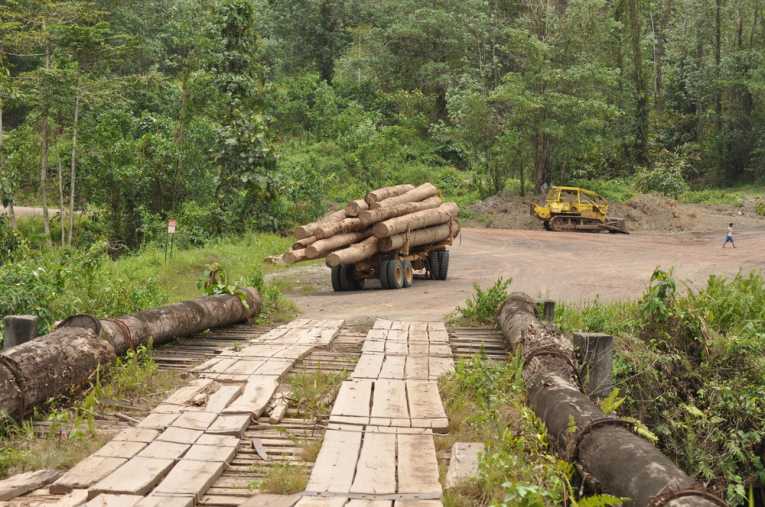The amount of carbon released into the atmosphere by tropical deforestation could be 12% less than estimated, scientists claimed. American researchers have created a 'wall-to-wall' carbon storage map of Africa, Asia and South America that shows tropical vegetation contains 21% more carbon than previously thought.
It was believed that up to 1.1billion tons of carbon is taken into the atmosphere annually by deforestation in the tropics. Using data from the new carbon storage map, scientists from Woods Hole Research Center (WHRC) at Boston University and the University of Maryland say the real figure may be up to 12% lower.
The group's findings have just been published in the Nature Climate Change journal.
Co-author, WHRC senior scientist Richard A. Houghton, says, "The paper is important for two reasons," said "First, it provides a high-resolution map of above ground biomass density for the world's tropical forests. Previous maps were of much coarser resolution and yielded wildly different estimates of both regional totals and spatial distribution. Second, the paper calculates a new estimate of carbon emissions from land-use change in the tropics."
The wall-to-wall map has a resolution of 500 metres by 500 metres includes forest, shrub land and savannah. Its colour coding shows the amount of carbon density stored by the plants.
Deforestation is seen as a major contributor to the creation of greenhouse gases that lead to climate change and is often the biggest cause of carbon emissions in developing countries.
Alessandro Baccini, the report's lead author and a WHRC assistant scientist, says the new data provides a more accurate way to estimate the level of carbon emissions.
"For the first time we were able to derive accurate estimates of carbon densities using satellite LiDAR observations in places that have never been measured. This is like having a consistent, very dense pan tropical forest inventory."
To take part in deforestation compensatory schemes and send data to the United Nations Framework Convention on Climate Change, nations need an accurate way to measure stored carbon.
WHRC associate scientist and report co-author Nadine Laporte, who led field measurements in Africa, says, "We worked closely with collaborators in twelve countries around the tropics to collect the field data needed to calibrate the satellite measurements and ensure relevance for their national reporting."
The map data uses the locations of biomass density and deforestation to reach a more accurate carbon density to the forests cleared, instead of average figures that were previously used.
Ecologist Greg Asner, of the Carnegie Institution for Science, says, "The study represents a major step forward in the effort to map the current state of global tropical biomass stocks. The 500m resolution of the map will help countries implement activities to improve forest management and to help fight climate change through reduced carbon emissions from deforestation."
The researchers believe that American tropical forests store around 118 billion tons of carbon, a fifth more than previous estimates.
Researchers from around the world assisted in the pan tropical field work.
The map's carbon storage data can be used to better calculate how many carbon credits are needed to reduce emissions through the UNFCCC and its financial value. Richard A. Houghton explains, "Your forest may be worth more if it's accumulating more carbon than another forest."
The researchers used field measurements to calibrate LiDAR (Light Detection And Ranging) satellite models - highly accurate, high-resolution elevation data from airborne sources. They also employed Moderate Resolution Imaging Spectoradiometer (MODIS) on NASA's Aqua and Terra satellites to map the carbon densities.
Co-author, WHRC senior scientist, Scott Goetz, says, "Coupling the LiDAR and field measurements is what makes this study and our map so unique, and powerful.
"Without measurements from a satellite-based LiDAR, a study of this nature would not have been possible. We need that capability going forward."
The carbon density full data set can be download here and the satellite processing algorithms and data are available here.










